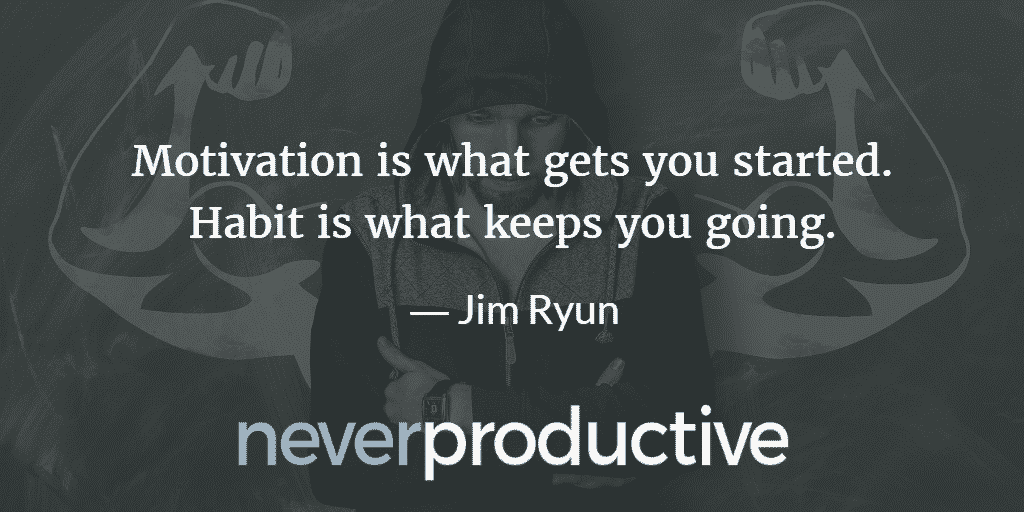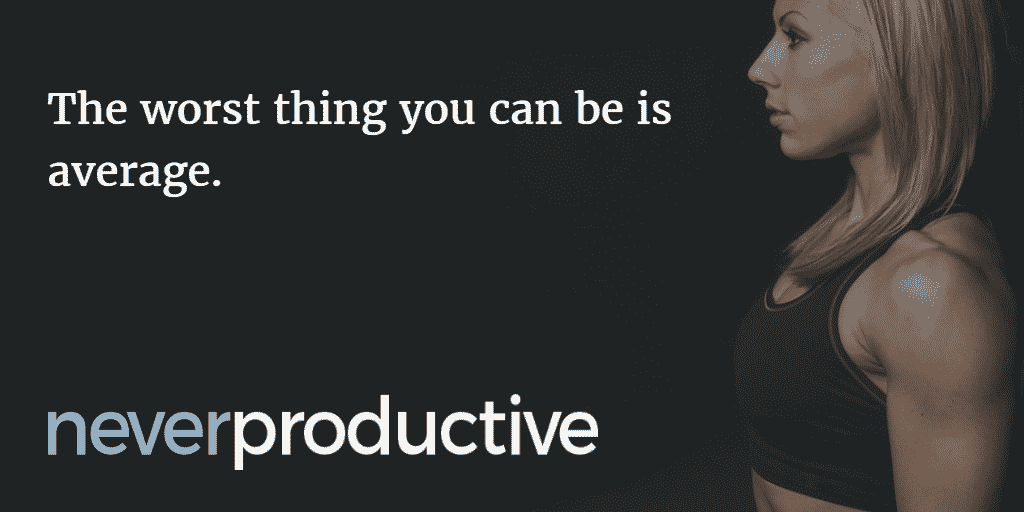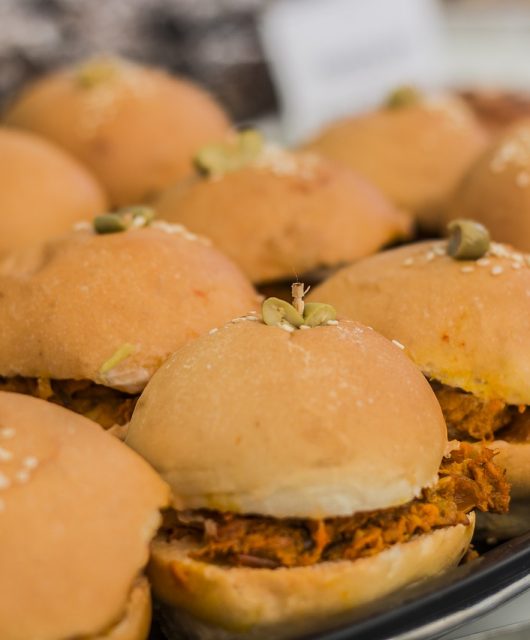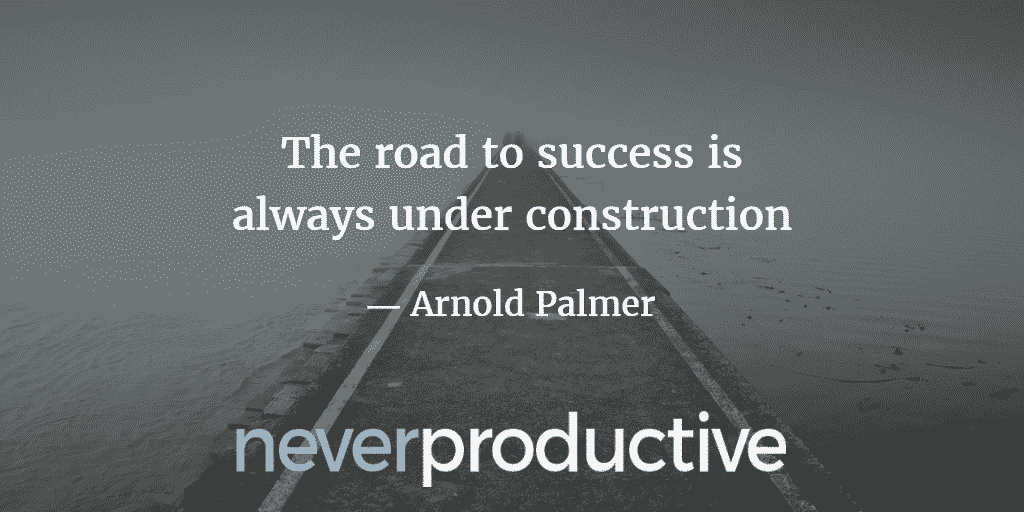Are you motivated to hit the gym all day, except for the 15 minutes before you have to leave?
Does your motivation seem fickle?
Fret not, that’s not the case! It’s not your motivation to blame, bad habits are.

For years, I’ve blamed my motivation for a lot of my issues. I’ve never seemed to have enough motivation to do all the things I wanted. It all changed when I read The Power of Habit by Charles Duhigg. It wasn’t motivation I needed to worry about, it was habits.
Short Version:
- Use your motivation to build strong, positive habits.
- Get rid of bad habits by either removing the cue or replacing the action with a positive one.
Why would a habit stop you from hitting the gym
It’s simple, really. Once you do a pattern enough times, it becomes a habit. We know that from high school. The thing is, this happens a lot more often than you’d think.
Finish work, go home and watch some TV to relax. Do that for a few months and your brain will make it a habit. You will want to watch some TV after work. And now you want to go to the gym, instead?!
When you start training in the evenings you’re also breaking the previous pattern. Less TV, more weights. At first, the novelty of evening training and your motivation to be fit will be enough. But after some time it won’t be that easy.
After the initial hype passes, going to the gym will compete directly with watching TV. Let me tell you, a motivated but tired person will almost always lose to his habits. Once you understand that, you can use strategy to win and successfully replace the habit.
Forming new habits

Your goal is to build a strong strategy that will get you to go to the gym for a few months. Drilling in a new habit takes between 18 and 254 days. The good thing is, the more you do it, the easier it becomes. This leads us to the best tool to help you at the beginning – manipulation.
Manipulation
The secret is: Manipulation beats Motivation. Usually, you don’t want anyone manipulating you. But what about You manipulating you?
The problem is, you’re difficult to manipulate. See, you’ve seen a good amount of advertisements in your life. So many, in fact, that you’re almost immune to their effects. The same goes for most other manipulations. You’ll have to be crafty.
Difficulty aside, manipulations work. That’s why companies use them and that’s why you should use them. They’re an effective tool to make future you do the things you want. Here are some ideas on how:
Rewards
- Items, Loot, Gadgets. Non-essential “junk” you don’t need, but want. Your new phone, 28th dress/T-shirt, and fidget spinner fall in that category. Instead of buying those items on a whim, buy them as rewards for things you want to do.
Plan the purchase before starting the task and let it motivate you until you reach the deadline. Finally, get your brain associate the shiny item with your awesome self-control skills. - Public Recognition. Everyone brags on social media, that’s the whole purpose of it. You can use that future bragging to pump you up while you’re feeling down. Don’t brag too early, though.
- Seinfeld Method. Not really Jerry’s idea, but it’s a lovely idea anyway. You get a big ol’ calendar and mark every day you do that thing you want to do. After a while, you’ll have a chain of marks. Don’t break the chain! Next.
Penalties
- Bets. Gambling is a bad idea, don’t do it! That aside, let me show you how to gamble your way to productivity. First, find a naysayer who doubts your skills. Then, bet money on a bit overzealous goal. Finally, you finish that goal to show how awesome you are. I find you too awesome to lose!
I don’t take responsibility if you do, though 😀 - Smart Bets. Yes, money again, it’s intrinsic value makes it perfect for motivation. Use software or a friend to donate your hard-earned cash to a cause you love (or hate) in case you fail.
- Friends. Finally, you can use a friend to help you stay invested. Getting someone to keep you accountable is an excellent strategy. You’d hate to let your friends down, so you can use that to get you going.
As you see, those are simple guidelines. They’re here to help you build your own method of getting you started. And yes, getting started is the hard part. Get started every day and your work will improve exponentially. Don’t waste time focusing on duration/quality if you’re not habitually progressing daily.
Getting started is the hard part.
Tweet
Removing bad habits

Now, after you know how to start building great habits, let’s tackle the elephant in the room. How to get rid of bad habits. It’s not easy, it’s not fast, but it’s worth it.
First, I’ll briefly explore how habits work. Habits consist of three steps:
- Cue. The cue is the call to action. It’s an event that triggers us to do the habit. It can be the smell of coffee, being angry, or even the time of day.
- Action. The action is what you do after the cue. It’s automatic. You don’t need to be fully awake or think to make coffee, smoke a cigarette, or grab a bagel.
- Reward. The reward is a usually positive feeling and not something tangible. Finishing our habits makes you feel a tiny bit better about yourself.
A good example would be:
- You’re learning and you hear a notification – Cue.
- Automagically, you reach for your phone – Action.
- You get a burst of dopamine in anticipation of what the notification is for – Reward.
Bad habits aren’t easy to get rid of because once carved in your brain, they stay there. Since they won’t easily disappear, you have to use hacks to get rid of them. Below are two of the best options.
Bad habits, once carved into your brain, stay there.
Tweet
Removing the Cue

What’s the first thing you do when you want to lose weight? You throw away all the junk food. If you want to stop smoking, you throw away the cigarettes. When you want to focus, you turn off your notifications. You’re cutting out the cue that triggers the bad habit.
You do those things because you intuitively know that after you get the cue you have to do the habit. It’s draining not to. How to avoid that? Remove the cue.
Although it has limitations, removing the cue is easy and effective. If nothing triggers you to misbehave, you won’t misbehave. Easy! But, as you already know, it doesn’t always work this way.
Even if you remove everything that triggers a habit, the habit will remain. Keep that in mind and this can be a powerful tool. Here are some situations where it’s perfect:
- If you can stay away from all the cues (and build better habits while you do). Throw away junk food, don’t buy junk food, don’t go near junk food in general. This could work for months. Meanwhile, you can build good habits like eating better food and exercising.
- You can use it as a temporary solution. That’s how disconnecting works. You can basically “disable” the habit at will.
Again, this isn’t a one-size-fits-all solution. It’s an easy way to get started, but it’s also easy to slip and relapse back to the habit. If you want to permanently change a habit, read ahead.
Replacing bad habits
If you’re biting your nails, I’m sure you don’t want to stop temporarily. For some habits you want them gone for good. You already know how habits work. Now, you’ll use that knowledge to replace them.
Replacing bad habits is by far the best way to hack your habits. You replace them. Here is how it works:
- Pinpoint a habit you want to change
- Find the cue of that habit
- Pick a new action for the habit
- The new action must have the same reward
- If possible, make that new action something that helps you develop
- Every time you get that cue do the new action instead of the habitual one
I’ll give you a personal example:
- Bad habit: I bite my nails
- The cue: I bite my nails when I’m annoyed
- New action: Stretching my fingers*
*Both give me a tiny bit of physical stimulation that takes my mind off from the annoyance
Now, not only I have nails, but stretching my fingers is actually useful for performing magic.
Yes, this requires a significant effort on your side. It will also take a while to replace the habit with the new action. But in the end, you’ll have trained your brain to automagically do stuff that makes you better.
How to use that information

You’re bound to have a large pool of automatic behaviors. Some of those habits might be bad, some might be great.
So, the power to shape them is essential. It’s not easy, but you can transform your bad habits into good ones and be even more awesome. And once you do, you sit back and enjoy the results for the rest of your life!
Stay Awesome,







